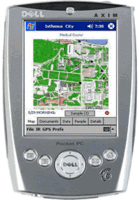Tuan 1.0
Tuan
Scanning through the pages of this book, I’ve realized that there is a lot of information.
I went through the chapters that I thought would best fit our research directives.
Chapter 2 – Experiential Perspective
Experience – term for various modes through which a person knows and constructs a reality.
This chapter primarily focuses on a discussion of experience. “Experience is a process by which external stimuli and internal processes work to define our environment.” Internally, he speaks about emotion, feeling and thought. All of which are “ways of knowing. Externally, he focuses on perception and sensation, looking at how the complexity of our senses creates an intellectual awareness.
“What we know is a reality that is construct of experience, a creation of feeling and thought.”
“Human beings not only discern geometric patterns in nature and create abstract spaces in the mind, they also try to embody their feelings, images, and thoughts in tangible material.”
Ch4 – Body, Personal Relations and Spatial Values
Body and bodily interaction define fundamental principles of spatial organization. Here he discusses how space is seen as a relationship between the body and that which is around it (egocentric). We define space according to how our body acts with in space and how bodies then relate to each other in space.
There is a significant discussion of how specific attributes of space (high & low, front & back) have come to take on certain meaning due to this bodily relationship.
“The human being imposes a schema on space.”
Ch6 Spatial Ability, Knowledge and Place
Here he focuses on “how spatial ability informs spatial knowledge,” Knowledge being a transferable resource.
The gist of the chapter is an understanding of how human beings go about learning space through their ability to move and then producing patterns of knowledge to replicate those movements.
“Spatial awareness comes through training.”
“Space becomes place through familiarity.”
He proceeds into the cultural implications of spatial ability and knowledge.
Ch 10 – Intimate Experiences of Place
“Each intimate exchange has a locale, which partakes in the quality of the human encounter.’
This chapter continues to refine the meaning of place and how one goes about defining place. “Place is a permanent stopping point.” Tuan talks about the impact of memory in building specifics to make a place, and the distinction between public and private places.
“Thought creates distance and destroys the immediacy of direct experience, yet it is by thoughtful reflection that the elusive moments of the past draw near to us in present reality and gain a measure of permanence.”
Scanning through the pages of this book, I’ve realized that there is a lot of information.
I went through the chapters that I thought would best fit our research directives.
Chapter 2 – Experiential Perspective
Experience – term for various modes through which a person knows and constructs a reality.
This chapter primarily focuses on a discussion of experience. “Experience is a process by which external stimuli and internal processes work to define our environment.” Internally, he speaks about emotion, feeling and thought. All of which are “ways of knowing. Externally, he focuses on perception and sensation, looking at how the complexity of our senses creates an intellectual awareness.
“What we know is a reality that is construct of experience, a creation of feeling and thought.”
“Human beings not only discern geometric patterns in nature and create abstract spaces in the mind, they also try to embody their feelings, images, and thoughts in tangible material.”
Ch4 – Body, Personal Relations and Spatial Values
Body and bodily interaction define fundamental principles of spatial organization. Here he discusses how space is seen as a relationship between the body and that which is around it (egocentric). We define space according to how our body acts with in space and how bodies then relate to each other in space.
There is a significant discussion of how specific attributes of space (high & low, front & back) have come to take on certain meaning due to this bodily relationship.
“The human being imposes a schema on space.”
Ch6 Spatial Ability, Knowledge and Place
Here he focuses on “how spatial ability informs spatial knowledge,” Knowledge being a transferable resource.
The gist of the chapter is an understanding of how human beings go about learning space through their ability to move and then producing patterns of knowledge to replicate those movements.
“Spatial awareness comes through training.”
“Space becomes place through familiarity.”
He proceeds into the cultural implications of spatial ability and knowledge.
Ch 10 – Intimate Experiences of Place
“Each intimate exchange has a locale, which partakes in the quality of the human encounter.’
This chapter continues to refine the meaning of place and how one goes about defining place. “Place is a permanent stopping point.” Tuan talks about the impact of memory in building specifics to make a place, and the distinction between public and private places.
“Thought creates distance and destroys the immediacy of direct experience, yet it is by thoughtful reflection that the elusive moments of the past draw near to us in present reality and gain a measure of permanence.”

0 Comments:
Post a Comment
<< Home